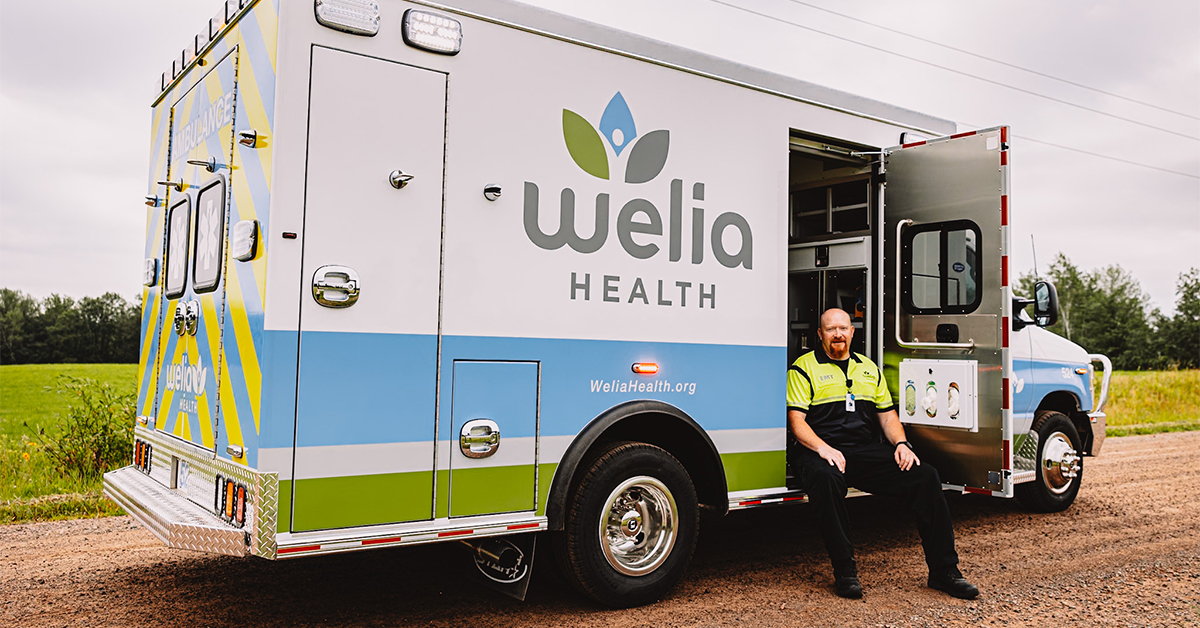A career in emergency medical services
We’re looking for rural-based paramedics
Welia Health, located in the heart of East Central Minnesota, is an accredited, critical access hospital with three clinic campuses- in both Kanabec and Pine counties. Its staff, a team of 600+, includes highly skilled paramedics and EMTs that primarily service 524 square miles with an approximate population of 16,000 people.
Known for our approach to care and individualized attention, a wellness focus and a deep sense of community – all of which are why our patients love us!
Why choose a rural EMS career?
A rural EMS career requires you to be self-sufficient and independent yet responsive. Our personalized approach to care allows us to build relationships with the patients, unlike urban EMS services, where high call volumes have you rushed from call to call.
Enjoy a good chat around the kitchen table? Then join an EMS team that values community, compassion, and camaraderie!
Why choose Welia Health?
- Where strictly maintained emergency vehicles and up-to-date equipment are valued
- Lower call volumes averaging 3,200/year split between 911 and interfacility transfers
- Level IV trauma center with 14,000+ visits per year
- Full-time, part-time and casual positions available with low monthly minimums
- Substantial PTO days, accrued with each pay period
- EIB-extended illness leave time for employees and dependents
- Paid recertification training every two years
- Sign-on bonus up to $7,500
- Competitive salary and benefits package including health, Flex benefits, wellness incentives and HSA along with dental
- Life insurance (1x annual pay) and long-term disability benefit included
- Eye care discounts range from 10%-25%
- Short-term, accidental, hospital confinement and critical care voluntary benefits available
- Identify theft restoration services
- Employee assistance program (EAP)
- Tuition reimbursement (up to $3,500 FT/$2,500 PT)
- 401(k) plan, vested after two (2) years, automatic 3% from Welia Health and a 50% employer match of the first 6% of employee contribution
*Some benefits are solely based on FTE status.
Contact us
Jody Brown
HR@WeliaHealth.org
320.225-3612


